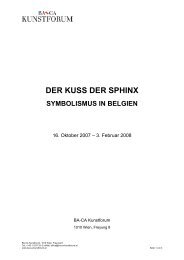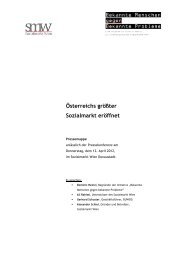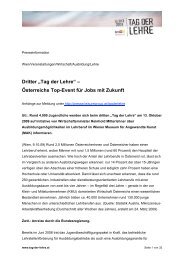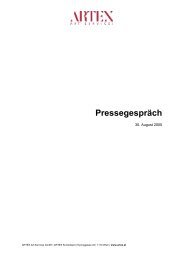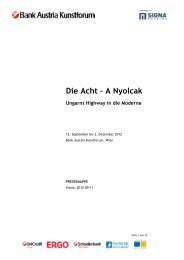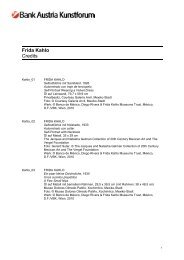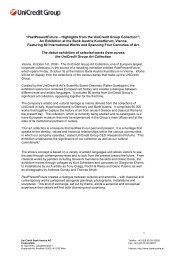Johann Heinrich Moser
Johann Heinrich Moser
Johann Heinrich Moser
You also want an ePaper? Increase the reach of your titles
YUMPU automatically turns print PDFs into web optimized ePapers that Google loves.
<strong>Heinrich</strong> <strong>Moser</strong> was born on 12 December 1805 and grew up in a Schaffhausen watchmaking<br />
family. Both his grandfather, <strong>Johann</strong>es <strong>Moser</strong> (1730-1820), and his father, Erhard <strong>Moser</strong><br />
(1760-1829), worked as town watchmakers in the town by the Rhine Falls. He learned the<br />
traditional watchmaker’s craft from his father between 1820 and 1824, and went on to<br />
broaden his knowledge after 1824 in the master watchmakers’ workshops in LeLocle<br />
(Switzerland). He had already come to recognize the restrictions imposed by the guild<br />
regulations, and he was a vehement opponent of these. At the same time, however, he did not<br />
ignore the quality-promoting aspects of these regulations, and he was even responsible for<br />
improving them. He rapidly gained respect as a skilled watchmaker, and he was able to start a<br />
successful small business to supply spare parts. It only took <strong>Moser</strong> about eighteen months to<br />
develop a reputation as an outstandingly talented specialist, and he received offers of work<br />
from Italy and Paris. From 1826, he was able to work for the first time on his own account for<br />
a German merchant, for whom he built clocks into cases and pieces of furniture. In November<br />
1827, the prospect of good business drew him to St. Petersburg in Russia, where in 1828 he<br />
opened H. <strong>Moser</strong> & Co. This marked the hour of inception of what would eventually grow<br />
into such a successful brand.<br />
<strong>Moser</strong>’s business flourished, which was certainly attributable to the painstaking care that he<br />
took throughout his life to ensure that the watches sold by him were supplied to a high quality<br />
standard. Not a single watch was allowed to pass over the shop counter unless it had been<br />
inspected personally by him or one of his representatives. In order to maintain this demand on<br />
superior quality, he established a watch factory in LeLocle in 1829, which produced watches<br />
exclusively for his businesses in Europe and Russia. The building that was home to the<br />
company exists to this day.<br />
The range of <strong>Moser</strong> watches grew to include 70 different calibres. In addition to the<br />
movements supplied by his own factory, he also purchased movements from such renowned<br />
companies as Urban Jürgensen or Jaeger-LeCoultre. The latter’s company archive lists him as<br />
a customer from 1860 onwards. From them he procured up to 64 different calibres, of which<br />
24 complications. The uncompromising quality of his watches gained him access as a supplier<br />
to the Imperial Russian Court, various royal houses and the armed forces. Within just a few<br />
years, he was selling watches to Japan, China and Persia, but also in the West in Paris and<br />
New York. Business continued to thrive, even in times of crisis, and <strong>Moser</strong>, who was by now<br />
a prosperous merchant and watch manufacturer, decided to return to Schaffhausen with his<br />
family at the end of 1848.<br />
From this point on, he would see his true life’s work as the transformation of Schaffhausen, a<br />
very quiet town in those days, into a lively and attractive industrial location, which also had<br />
room for a watch production facility. At the same time, he set about the construction of the<br />
magnificent Charlottenfels manor house for his family.<br />
In 1851 he completed the construction of a canal on the Rhine, which supplied the water to<br />
drive a turbine with an output of about 80 h.p. This was followed in 1853, in a joint venture<br />
with other personalities from Schaffhausen, by the establishment of the “Schweizerische<br />
Waggonfabrik bei Schaffhausen” (Swiss Wagonworks at Schaffhausen) and, in the same year,<br />
the establishment of the “Schweizerische Industriegesellschaft (SIG) Neuhausen” (Swiss



